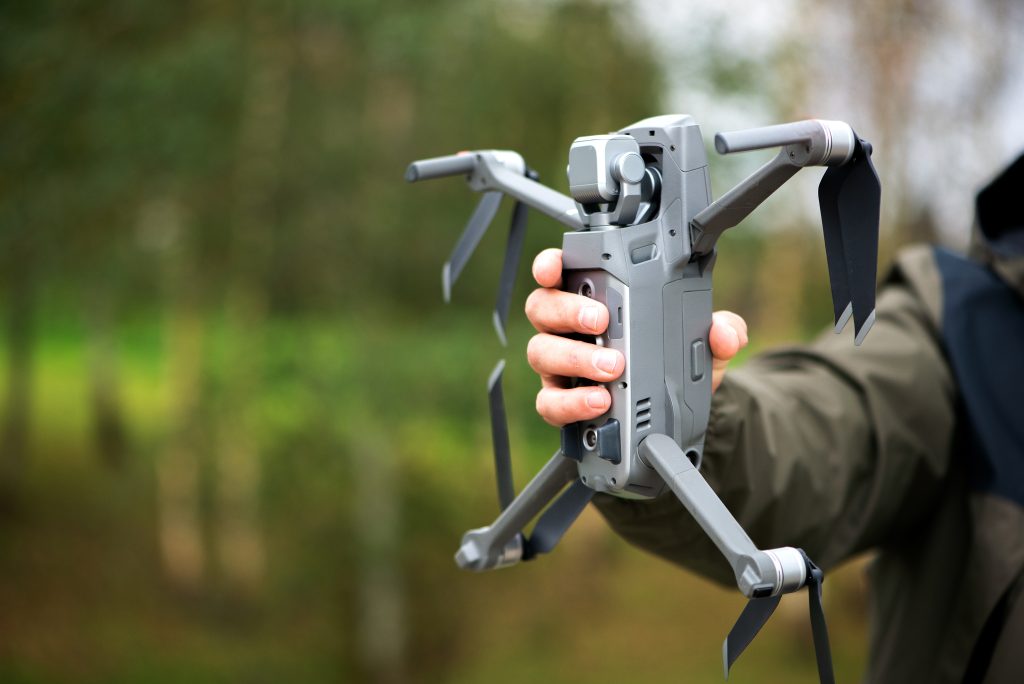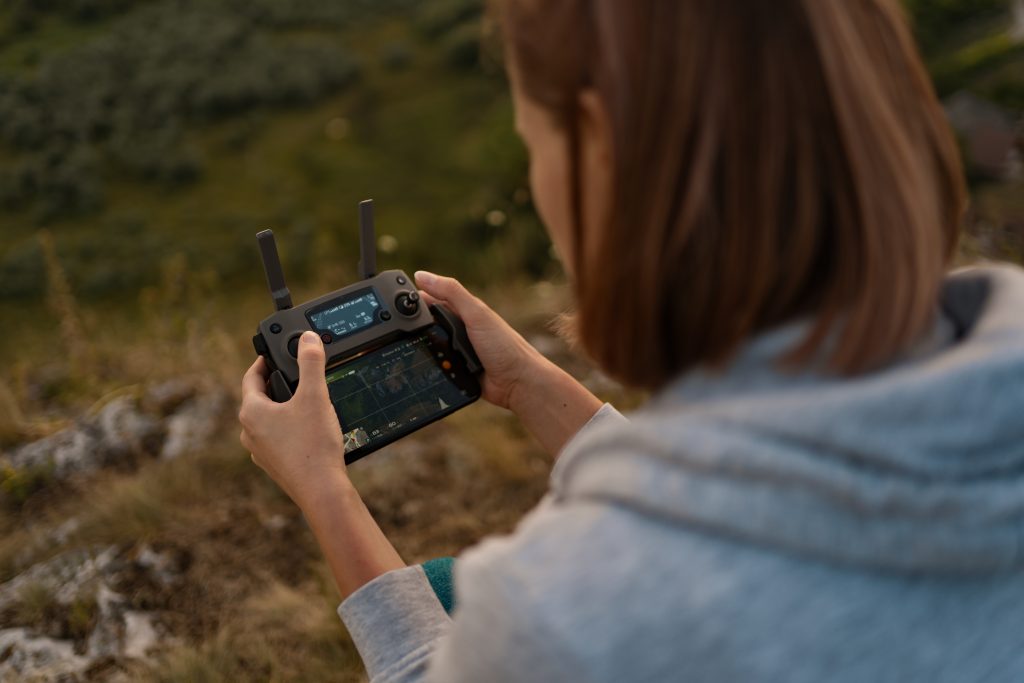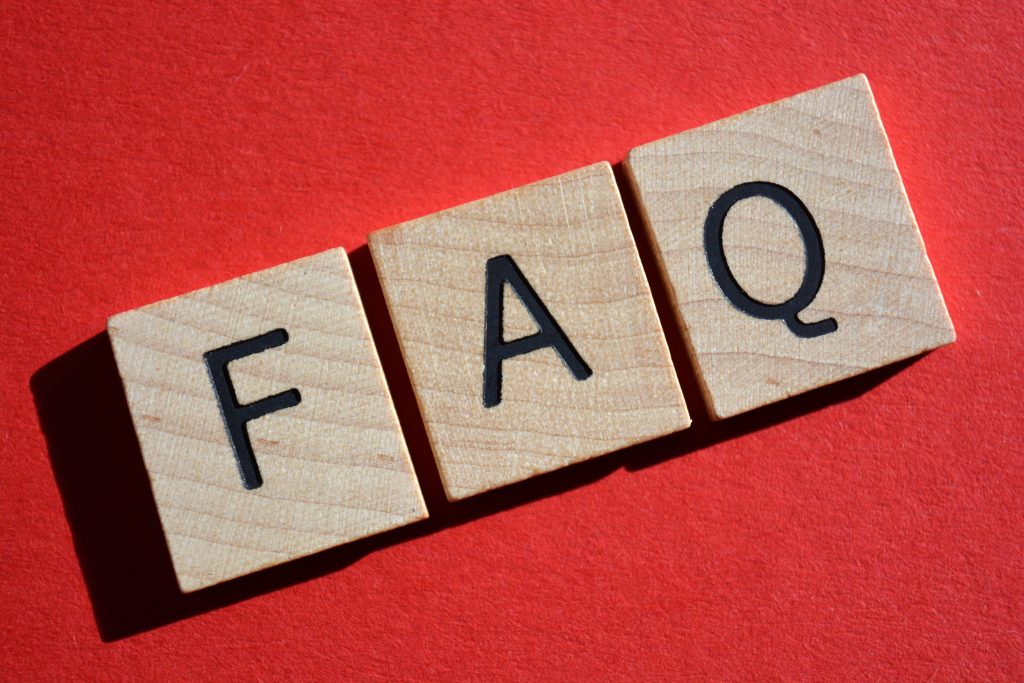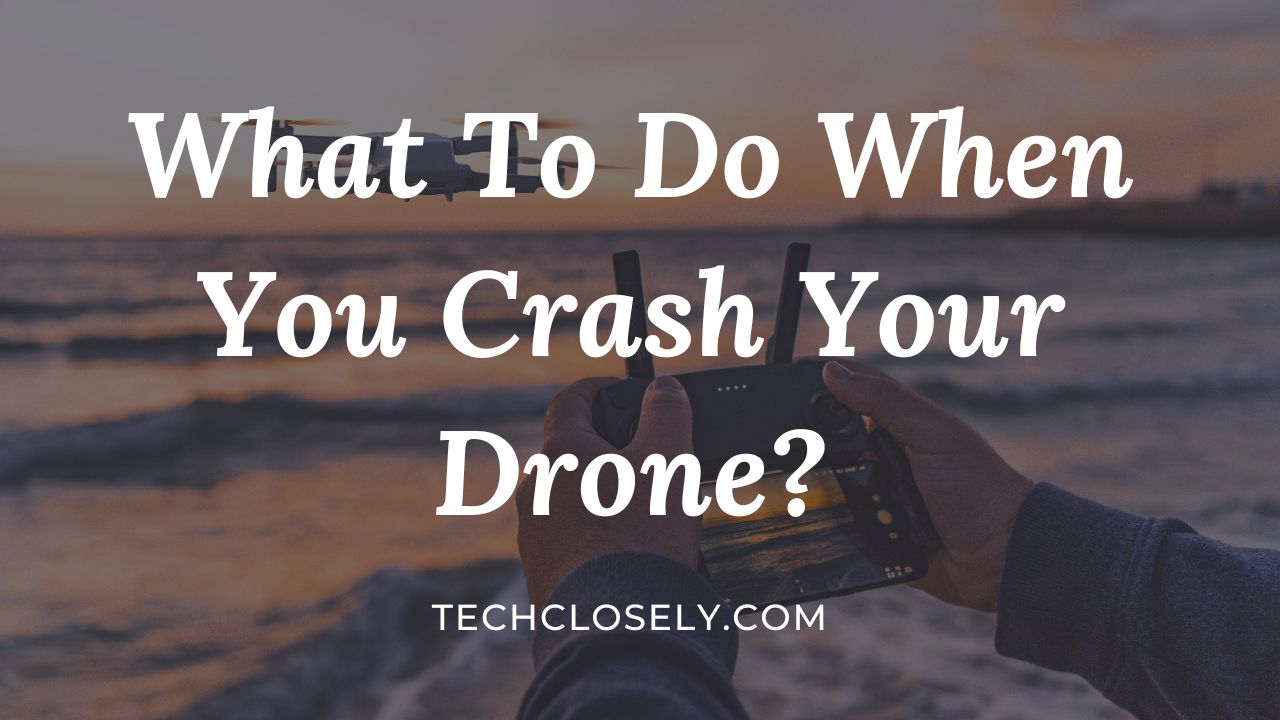You’re standing in a wide-open field, ready to capture breathtaking footage with your drone. The sun is shining, the air is crisp, and you’re filled with anticipation. But then, unexpectedly, disaster strikes. Your drone veers off course and crashes, leaving you with a sinking feeling in your chest. The drone, once your trusted companion in the sky, now lies broken and motionless on the ground.
Now, while the story I just shared may not fit exactly the same for you, crashes happen more often than we’d like to admit.
Every drone pilot, at some point, faces the heart-wrenching moment of seeing their drone damaged or grounded. But fear not! This is not the end of your drone’s journey, nor is it the end of yours as a drone pilot.
In this blog post, we’ll provide you with practical advice on assessing the damage, making necessary repairs, and getting your drone back up in the air where it belongs. Along the way, we’ll share tips and insights to help you avoid similar mishaps in the future.
Things To Do When You Crash Your Drone

Locate the Drone
It may seem daunting to locate your crashed drone, especially if it landed in an unfamiliar or hard-to-reach area.
As a drone owner, here are some tips to assist you in locating your drone:
- Use GPS Tracking: Many modern flying drones are equipped with GPS technology, which allows you to pinpoint their exact location. Check your drone’s user manual or consult the manufacturer’s website to understand how to access and utilize this feature.
- Activate the Drone’s Alarm: Some drones have an alarm or “Find My Drone” feature that you can activate through the accompanying app. This will trigger a loud sound or flashing lights on the drone, making it easier to locate visually.
- Follow the Last Known Flight Path: If you can recall the flight path before the crash, visually trace that trajectory to get a general idea of where this unmanned aircraft might have landed. Look for any visible landmarks or distinctive features in the area.
- Utilize tools: Binoculars or a pair of VR goggles can help you scan the surrounding area more effectively. Look for any signs of your drone, such as its distinct color, flashing lights, or any wreckage that might have been left behind.
- Ask for Help: If you’re unable to locate your drone on your own, consider enlisting the assistance of friends, family, or fellow drone enthusiasts. Having extra sets of eyes can significantly increase your chances of finding the crashed drone.
Remember, safety should always be your priority. If the crash occurred in a hazardous location or an area that is difficult to access, it might be best to seek professional assistance. Additionally, be mindful of any local regulations or guidelines regarding the retrieval of crashed drones.
Checking for Damage to the Drone

After you’ve found your broken drone, it is crucial to conduct a thorough inspection to assess the damage and ensure the drone’s flightworthiness. Here’s what to check to speed up the process:
A. Inspection of the Drone for External Damage:
- Carefully examine the drone’s physical condition, focusing on the external components.
- Check for visible signs of damage, such as cracks, dents, or scratches on the body, propellers, arms, and landing gear.
- Look for any loose or misaligned parts that may require adjustment or repair.
- Take note of the extent and location of the damage for documentation purposes.
B. Testing the Functionality of Various Components:
- Check each motor by gently spinning the propellers to ensure they rotate smoothly without any resistance or unusual sounds.
- Test the drone’s controls and responsiveness, including the remote controller inputs and any automated flight modes.
- Verify the functionality of the camera, gimbal, and other auxiliary components, ensuring they move correctly and capture footage as intended.
- Pay attention to any abnormal behavior, errors, or malfunctions during these tests.
C. Identifying and Documenting Issues or Malfunctions:
- Make a detailed list of any issues, malfunctions, or abnormalities observed during the inspection and testing process.
- Take photographs or videos of the damaged areas, dysfunctional components, or error messages displayed on the drone or its companion app.
- Document the crash’s date, time, and circumstances, as well as any relevant environmental conditions or flight data.
- This documentation will serve as a reference when seeking assistance or ordering replacement parts.
By conducting a thorough inspection, testing the functionality of various components, and documenting any issues or malfunctions, you’ll have a clear understanding of the substantial damage caused by the crash. This information will guide you in determining the necessary repairs, replacements, or adjustments needed to get your drone back to optimal working condition.
How To Repair Crashed Drone
Repairing a crashed drone requires a systematic approach that involves performing initial repairs, diagnosing internal issues, ordering replacement parts, performing advanced repairs, and considering warranty repair options.
Here’s a detailed step-by-step guide:
Perform Initial Repairs:

After a drone crash, start by assessing the external damage. Replace any broken or bent propellers with compatible replacements, following the manufacturer’s instructions. Examine the landing gear for cracks or misalignments and replace if necessary.
Additionally, check for loose or disconnected parts and use appropriate adhesives, fasteners, or connectors to reattach or reinforce them. Thoroughly clean the drone to remove any debris or dirt that may have accumulated during the crash.
Diagnose Internal Issues:
Connect the drone to a computer or mobile device using the manufacturer’s software or a compatible third-party app. Review the drone’s error logs and diagnostic reports to identify any internal issues or malfunctions.
Look for error codes, sensor readings, or other indicators of problems that require attention.
If you’re unable to diagnose the internal issues or lack the technical expertise, consider contacting the drone manufacturer’s support team or a certified repair center for further guidance or assessment.
Order Replacement Parts:
Based on the damage assessment and internal diagnostics, create a list of required replacement parts. Make note of specific model numbers, specifications, and quantities needed.
Purchase replacement parts from reliable sources such as the drone manufacturer or authorized resellers.
Ensure that you’re obtaining genuine components by checking for authenticity. Read reviews and compare prices to ensure you’re getting high-quality replacements.
Perform Advanced Repairs:
Follow detailed repair guides or tutorials provided by the manufacturer or available online. These resources will walk you through the steps of replacing your broken drone components.
Install new motors, flight controllers, camera assemblies, or other necessary parts based on the extent of the broken drone. Ensure proper calibration and firmware updates after repairs.
Take your time and follow the instructions carefully to ensure a successful repair.
Warranty Repair:
If your drone is still under warranty and the damage is covered, consider exploring warranty repair options. Contact the drone manufacturer to inquire about their warranty policy and procedures.
They may offer repair or replacement services at no additional cost or a very cheap cost, provided the damage falls within the warranty terms and conditions. Follow their instructions on how to proceed with a warranty claim and send the drone for repair if applicable.
Also, remember to exercise caution, consult available resources, and seek professional assistance when needed. With the right approach, you can restore your drone to working condition and get back to enjoying thrilling aerial adventures.
How To Avoid Drone Crash

To help you avoid drone crashes and ensure safe flying, below are the tips you can follow to minimize the risk of mishaps.
- Read and Understand the User Manual: Before taking this unmanned aircraft or drone for a flight, thoroughly read and understand the user manual provided by the manufacturer.
Familiarize yourself with the drone’s features, controls, flight modes, and any limitations or specific instructions. - Choose the Right Flying Environment: Selecting an appropriate flying environment is crucial for safe drone operations. Choose an open area away from obstacles, buildings, and people.
Avoid flying near airports, crowded public spaces, or restricted areas where drones are prohibited. - Check Weather Conditions: Always check the weather forecast before flying your drone. Avoid flying in high winds, rain, fog, or other adverse weather conditions that can affect stability and control. Strong winds can easily push your drone off course or cause it to lose control.
- Perform Pre-flight Checks: Prior to every flight, conduct pre-flight checks to ensure your drone is in good working condition. Inspect the propellers for damage or wear, check the battery level, and ensure the motors, sensors, and camera are functioning properly. Also, verify that the firmware and software are up to date.
- Calibrate Your Drone: Calibrate the drone’s compass, accelerometer, and gyroscope according to the manufacturer’s instructions. This helps maintain accurate flight control and stability, preventing any sudden and unexpected movements.
- Plan Your Flight Path: Before taking off, plan your flight path and be aware of any potential obstacles or hazards in the vicinity. Maintain a clear line of sight with your drone, especially if you’re flying beyond visual range using FPV (First Person View) goggles or a monitor.
- Practice Drone Handling Skills: Developing good piloting skills is essential for safe flying. Start with basic maneuvers and gradually progress to more advanced techniques. Practice maintaining a steady hover, smooth takeoffs and landings, and precise control of altitude, yaw, pitch, and roll movements.
- Keep a Safe Distance: Maintain a safe distance from people, wildlife, and property during flights. Respect the privacy and safety of others, and avoid flying directly over or near crowds. Maintain a buffer zone around sensitive areas, such as schools, hospitals, or residential neighborhoods.
- Understand and Comply with Regulations: Familiarize yourself with each and every drone law and regulation and comply with them at all times. Different countries and regions may have specific rules regarding flight altitudes, flight paths, drone registration, and permits. For example, in the US you must comply with federal aviation administration or faa regulations. Stay updated with any changes or restrictions in your area.
- Be Mindful of Battery Life: Monitor your drone’s battery level during flight to ensure a safe return. Plan your flight duration accordingly, leaving ample time for a safe landing before the battery drains completely. Additionally, avoid charging or using damaged or malfunctioning batteries.
- Stay Aware of Signal Strength: Pay attention to the signal strength between your remote controller and the drone. Weak signals or interference can lead to loss of control and potential crashes. Maintain a clear line of sight and avoid flying in areas with strong radio frequency interference.
- Practice Emergency Procedures: In case of emergencies or unexpected situations, be prepared to execute emergency procedures.
Familiarize yourself with the drone’s emergency landing feature, return-to-home function, or manual override controls. This knowledge can help you regain control and prevent accidents. - Learn from Near Misses and Incidents: If you encounter a near miss or incident during a flight, take the opportunity to learn from it. Reflect on the factors that led to the situation and identify areas for improvement. Analyzing and understanding mistakes can help you become a better and safer pilot.
- Continuous Learning and Training: Stay updated with the latest drone technology, faa regulations, and best practices through online resources, forums, and training programs. Participate in flight simulations or attend drone training courses to enhance your skills and knowledge.
Also, it is always better to fly a drone from a skilled drone operator. Naive drone operators would easily cause these aircraft accident too often. So, skilled pilots are always recommended when operating a drone.
FAQ: What To Do When You Crash Your Drone?

Q: What should I do immediately after my drone crashes?
A: After a drone crash, it’s important to prioritize safety. Ensure that the motors are turned off and disconnect the battery to prevent any potential hazards. Assess the crash site and nearby surroundings for any immediate dangers.
Q: What should I do if my drone causes damage to the surrounding area or property?
A: If your drone caused any damage to the surrounding area or property, it’s important to take responsibility for it. Assess the extent of the damage and contact the affected parties. Apologize for the drone incident and offer to reimburse or repair any damages caused. Cooperate with the individuals involved and resolve the situation amicably.
If your drone flight resulted in any problems or damage to the surrounding area, it’s important to take responsibility and address the situation appropriately. In that case, you must pay the price.
Q: What should I do if my drone is still under warranty?
A: If your drone is still under warranty and the damage is covered, reach out to the drone manufacturer. Inquire about their warranty repair policy and procedures. Follow their instructions on how to proceed with a warranty claim. They may offer repair or replacement services at little to no additional cost, provided the damage falls within the warranty terms and conditions.
Conclusion
Crashing your drone can be a disappointing and frustrating experience, but it’s crucial to learn from it and prevent similar incidents in the future.
One important step in this process is identifying the cause of the crash. By carefully examining the flight path, assessing physical damage, analyzing flight data, and considering environmental factors, you can gain insights into what went wrong.
Understanding the cause of the crash helps you take corrective measures and avoid repeating the same mistakes. It may reveal issues such as pilot error, equipment malfunction, external interference, or environmental conditions that caused the drone accident. By pinpointing the cause, you can take steps to improve your piloting skills, maintain your equipment properly, and make informed decisions during future flights.
In addition, identifying the cause of the crash also helps in documenting any damage or malfunctions for drone insurance claims or warranty purposes. It allows you to communicate effectively with manufacturers, repair centers, or support teams, enabling them to provide appropriate assistance and guidance.
So, if you find yourself facing a drone crash, don’t lose hope. Approach the situation with a curious and analytical mindset, and utilize the information provided in this blog post to navigate through the process of repair and recovery.

